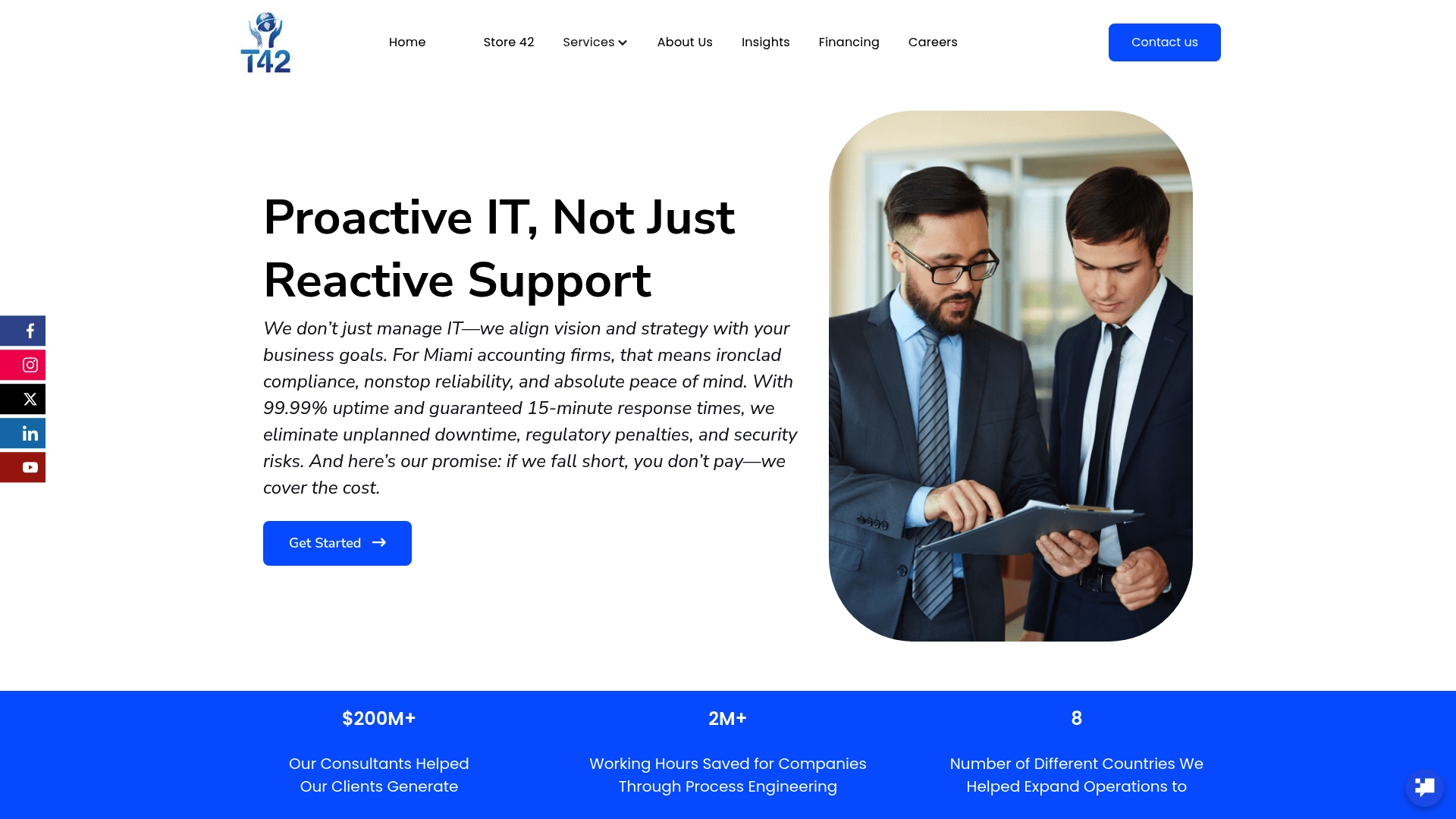
More than 70 percent of major change programs fall short of their goals, according to industry research. For accounting firms coping with new technology, shifting regulations, and constant client demands, this statistic is more than just a number. The ability to manage organizational change separates firms that thrive from those that watch opportunities slip away. Understanding how to guide teams through transformation can safeguard your firm’s stability and set the stage for sustainable growth.
| Point | Details |
|---|---|
| Importance of Change Management | Change management is essential for guiding organizations through transitions, ensuring alignment, integration, and strategic planning to avoid failures. |
| Key Steps in the Change Management Process | A systematic five-step approach, including preparation, strategic planning, implementation, integration, and review, is critical for effective change. |
| Critical Roles in Change Management | Success relies on well-defined roles such as Change Managers, Change Agents, and Executive Sponsors to drive transformation effectively. |
| Common Pitfalls to Avoid | Organizations must establish a sense of urgency, a compelling shared vision, and promote a strengths-based narrative to avoid common mistakes in change initiatives. |
As accountants navigating complex business environments, you’ve likely experienced organizational shifts that feel like trying to steer a massive cruise ship through choppy waters. Change management is your strategic navigation system for those challenging transitions. According to research from Wikipedia, change management is a discipline focused on preparing and supporting individuals, teams, and organizations through significant transformations like restructuring, process updates, or implementing new technologies.
Why does change management matter? Because without a thoughtful approach, organizational changes can sink faster than a balance sheet with bad math. Organizational change management (OCM) does more than just shuffle paperwork - it aligns expectations, integrates teams, and uses critical metrics to design strategies that prevent change failures. Our guide on cultural agility can help you understand these dynamics better.
The core of change management integrates behavioral and social sciences to manage transitions effectively. Think of it like tax preparation - you wouldn’t file complex returns without a systematic approach, right? Similarly, successful organizational change requires:
For accounting firms, especially those juggling multiple clients and complex regulatory environments, change management isn’t just a nice-to-have. It’s your strategic lifeline for maintaining stability while embracing necessary organizational evolution.
Accounting firms are constantly evolving, and change initiatives have become the heartbeat of organizational growth. According to research from Accounting Today, firms are increasingly focusing on transformative changes that go beyond traditional operational tweaks. These initiatives range from technological upgrades to fundamental shifts in service delivery and team dynamics.
Some of the most critical change initiatives in modern accounting practices involve strategic technology adoption. Exploring digital innovation best practices can help firms understand how to integrate emerging technologies effectively. Common change initiatives include:
According to Accounting Today, successful change management goes deeper than surface-level modifications. The most impactful initiatives focus on defining a shared vision and moving beyond a deficit-focused approach. This means creating a forward-looking organizational culture that embraces continuous improvement and strategic transformation.
For Miami accounting firms navigating multicultural markets and complex regulatory environments, change initiatives are not just about technological upgrades. They’re about creating adaptive, resilient organizations that can pivot quickly, serve diverse client needs, and stay ahead of industry disruptions. The goal isn’t just to change but to evolve strategically and purposefully.
Navigating change in an accounting firm isn’t like filing a standard tax return - it’s more like crafting a complex, multi-year strategic plan. Change management requires a systematic approach that goes beyond simply announcing new procedures. According to research from LaFosse, successful change initiatives start with a comprehensive assessment of organizational readiness and thorough stakeholder mapping.
The process typically involves a structured five-step approach. Understanding digital transformation can provide additional context for these steps. According to research from Harvard Business School, the key stages include:
For Miami accounting firms dealing with dynamic multicultural environments, these steps aren’t just theoretical - they’re practical survival strategies. The goal is creating an adaptive organization that can pivot quickly, minimize disruption, and turn potential challenges into opportunities for growth and innovation.

Here’s a summary of the five key change management steps for accounting firms:
| Step | Main Activities | Success Factors |
|---|---|---|
| Organizational Preparation | Assess readiness Identify resistance Build support |
Employee engagement Thorough assessment |
| Vision & Strategic Planning | Set roadmap Define KPIs Communicate plans |
Clear communication Measurable goals |
| Empowered Implementation | Launch changes Engage teams Offer training |
Team buy-in Ongoing support |
| Cultural Integration | Embed new practices Reinforce messaging |
Culture alignment Consistent messaging |
| Continuous Review | Analyze outcomes Gather feedback Adjust plans |
Stakeholder input Agility |
![]() |
|
Successful organizational change isn’t a solo performance - it’s more like a well-choreographed dance where every participant plays a critical role. Change management requires a strategic team approach with clearly defined responsibilities. According to research from Whatfix, these roles range from high-level strategic planners to grassroots change advocates who make transformation happen on the ground.
The core team typically includes several key players. Digital innovation best practices can provide additional context for understanding these roles. According to research from ProClipse Consulting, the critical roles include:
Change Manager: The strategic conductor
Change Agents: The organizational translators
Executive Sponsors: The visionary champions
For Miami accounting firms navigating complex regulatory landscapes and multicultural environments, these roles are not just theoretical constructs. They represent the human infrastructure that transforms organizational vision into practical, sustainable change. The most successful transformations happen when these roles work in synchronized harmony, turning potential resistance into collaborative momentum.
In the world of accounting firms, change management can feel like navigating a minefield blindfolded. According to research from Accounting Today, many organizational transformations stumble right out of the gate due to fundamental strategic mistakes. The most critical error? Lacking a sense of genuine urgency that propels meaningful change forward.
Understanding digital transformation reveals that successful change requires more than good intentions. The most common pitfalls accounting firms encounter include:
Insufficient Change Momentum
Vision and Alignment Problems
Negative Change Framing
To overcome these challenges, firms must shift from problem-spotting to strength-building. This means defining clear success metrics, involving representatives across organizational levels in vision creation, and fostering a positive, forward-looking narrative. The goal isn’t just avoiding mistakes - it’s transforming organizational potential into tangible, sustainable progress. For Miami accounting firms operating in dynamic, multicultural environments, adaptability isn’t just a strategy. It’s survival.
If your Miami accounting firm is feeling the pressure of managing complex organizational changes, you’re not alone. The most common threats—unplanned downtime, compliance headaches, poor communication, and cultural misalignment—can leave your team overwhelmed and your clients uncertain. Our proven strategies at Transform42 help you bypass these pitfalls with confidence. We specialize in aligning vision, strategy, and IT infrastructure, so change management becomes your firm’s competitive advantage, not a hidden risk. For additional tips on cultivating a resilient workplace, our guide to cultural agility unpacks the social drivers for organizational success.

Experience nonstop peace of mind. Transition from reactive management to proactive excellence with guaranteed 99.99 percent uptime and a 15-minute response promise. See how our digital innovation best practices can boost your firm’s adaptability today. Don’t wait for change to disrupt your business—take charge now at Transform42 and give your clients the dependable service they deserve.
Change management is a discipline focused on preparing and supporting individuals, teams, and organizations through significant transformations such as restructuring, process updates, or implementing new technologies.
Change management is crucial for accounting firms as it helps maintain stability during transitions, aligns expectations, integrates teams, and uses critical metrics to design strategies that prevent change failures.
The key steps in the change management process include organizational preparation, vision and strategic planning, empowered implementation, cultural integration, and continuous review.
Common pitfalls in change management include insufficient change momentum, vision and alignment problems, and negative change framing. It’s essential to create a genuine sense of urgency and a compelling shared vision to overcome these challenges.